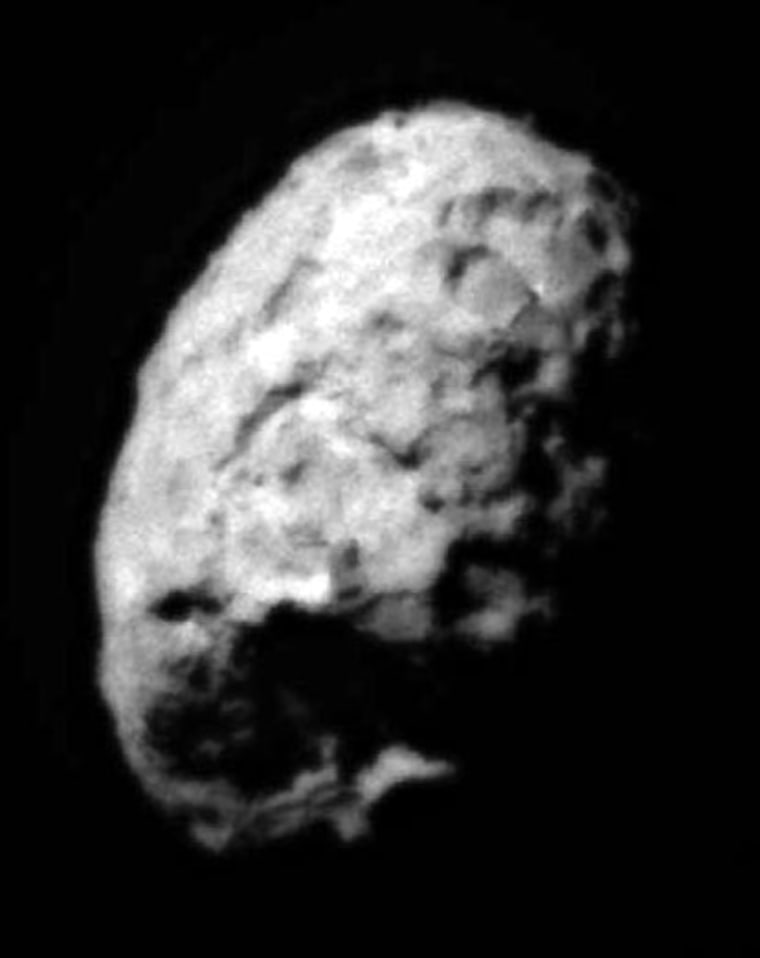NASA on Tuesday released a second close-up image of a comet taken Jan. 2 by the Stardust spacecraft. Astronomers said the dozens of photographs beamed back are the best ever made of a comet.
The observations promise to help scientists unravel many remaining mysteries about the makeup and history of comets.
The images of Wild 2 (pronounced "Vilt 2") were made during a high-speed flyby in which the robotic probe's primary mission was to capture dust particles cast off by the comet. That part of the project was successful, managers said, and the dust is on its way back to Earth inside a sealed capsule. The samples will be returned in 2006.
Meanwhile, 72 close-up images — only two of which have been shown to the public — are giving scientists a whole new look at the icy, pitted surface of one of the solar systems most enigmatic objects.
Bonus scienceStardust's camera was designed for navigation, not science.
"But these are the best images ever taken of a comet, and there is a remarkable amount of information in those 72 pictures," said Ray Newburn, who led the imaging effort. "Not only did we image the jets of material spewing out from the comet, but for the first time in history we can actually see the location of their origin on the surface of the comet."
Scientists don't know the exact composition comets, nor exactly how and why they eject material into space. The outflow jets appear to allow primordial material from below the comet's surface, inside its nucleus, to be released.
Previously, the best images of a comet were taken by the Deep Space 1 probe in a 2001 . That mission, too, was not designed primarily to take pictures.
"We thought we would see a uniform increase in the number of particles the closer we came to the comet's nucleus and then a reduction," said the University of Washington's Don Brownlee, Stardust's principal investigator. "Instead, our data indicate we flew through a veritable swarm of particles, and then there would be almost nothing, and then we would fly through another swarm."
Bits of these swarms were captured by the world's lightest solid, a NASA-developed substance called . Some of the dust was analyzed onboard the Stardust craft, which earlier in its mission also captured some stardust for analysis. No conclusions have been drawn yet from any of the collected material.
Other particles captured by the aerogel were transferred to a sample return capsule. Mission managers said Tuesday that they're confident the capsule is indeed filled with comet particles.
Analysis of the images will begin immediately while scientists wait for the comet dust to be delivered to the Utah desert.
Analysis of the comet dust is expected to help scientists to better understand the composition of comets, which in turn should reveal much about the early history of the solar system.
Comets are thought to be leftovers of the formation process, objects that never grew to planet size but which underwent the same early evolution. There is some doubt, however, about how pristine comets are. Some researchers expect most comets that roam the solar system now have undergone in the billions of years since the first comets formed.
